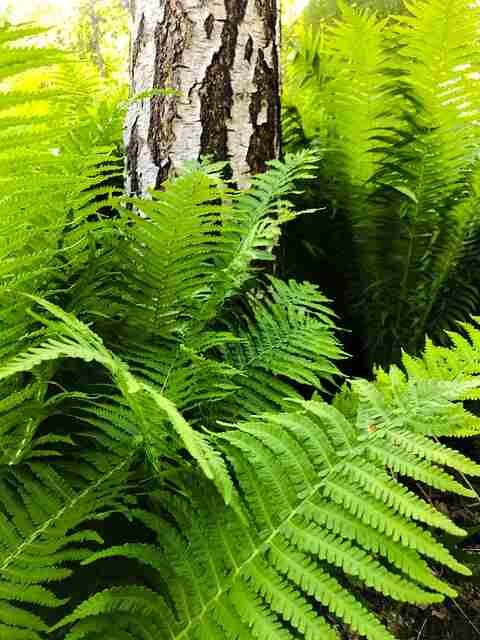Whether you have a big building blocking you, a big tree, a big house, whatever the case may be, and you say, ‘Oh, I can’t garden, I can’t grow anything worthwhile,’ think again. Because after reading this article, you will still be harvesting epic amounts of produce.
What’s going on gardeners? It’s my goal to help you grow a greener thumb. Now, you might say, ‘I have 2 to 4 hours of Sun, what am I supposed to do? Grow? I don’t know what to grow.’ Well, it would be a big mistake to ignore those sections of the garden. You can still squeeze out, like I said, an impressive amount of yield. So, we’re gonna go over 12 different vegetables and herbs that do well, so I’m gonna do really well, and some that can tolerate shade. I’m gonna go over 6 different tips to really help maximize your results in your shady garden. So let’s cultivate.
Crop Number One: Spinach plant

It’s hanging out in our veggie pod here. It is the spinach plant. Spinach, wow, it is an incredible, incredible cold-tolerant green. It’s a great shady garden crop..But things to know about spinach. Number one, like I said, cold-tolerant, which means it’s heat intolerance. So you don’t want to grow it in too many spots that are getting blasted both by direct Sun and by excessive amounts of heat. That makes it a really good early spring crop. It makes it a good fall into winter crop. In the summer, you can make it happen by putting it where in your shady garden right now. The thing I’ll say about spinach is I recommend starting from seed, but indoors. It’s a slow germinator, sometimes can take up to two weeks to germinate, even though it’s a nice big seed. And you know, that can sometimes test your patience when you’re direct sowing it. So I recommend starting indoors, and then you can keep starting it on succession and just producing crop after crop after crop of delicious, nutritious spinach.
Crop Number Two: Chard
We have chard of yellow. That looks absolutely stunning, chard. . In any case, as of late did I get it back, all that’s becoming great. Therefore, you can effectively perennialize chard. You can simply develop it in an obscure spot, just come pick it as you really want it.
Chard seeds are compound in nature. This means there are many seeds together. So, when you plant one seed, many chard plants will typically emerge.
Crop Number Three: Lettuce
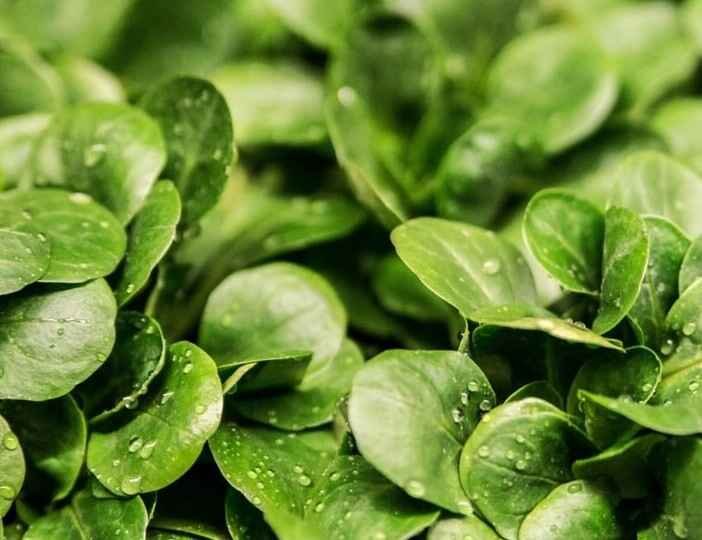
Shady crop number three is going to be most varieties of leaf lettuce. Really, almost any variety of leaf lettuce, you can have your pick here. Lettuce is a very quick-growing crop. Of course, it will grow a little bit slower in the shade. So you can pick an even quicker cultivar, something that matures in, let’s say, 35 to 45 days, as opposed to in that 55 plus. That’ll help you out. A little, of course, starting from transplants is going to help you out a little bit because if you’re starting the seed by direct sowing in your shady bed, then that early growth is really going to be stunted. So if you go ahead and start it in your seed starting system and then transplant some really nice and healthy seedlings, then you’re going to get it off to a much better start. But almost all of them do really well. Lettuce can sometimes struggle in high temperatures and direct Sun. These very sensitive leaves can have a hard time. It’s a shallow-rooted plant. And so that really speaks right to the benefits of a shady garden as the soil doesn’t dry out as much, the temperature is a little bit more stable, and a little bit on the colder side.
Crop Number Four: Endive and Escarole
Crop number four, which I coincidentally just harvested out, so I don’t have an example, , but crop number four is a twin crop. So it’s endive and escarole. Endive and escarole. These are really underrated greens. I’m not sure why they’re not grown more. I think some people might have a hard time with the flavor, but I personally think if you throw it into a mixed green salad, it tastes really nice. They look really nice. And they grow really well in a shady garden. Now, again, I know I’m kind of beating the drum here, but this is when you definitely do want to start indoors because I’ve noticed that both endive and escarole seeds are much slower to germinate as compared to most leafy greens. The lettuce we just talked about, lettuce is a quick germinator. Anything like an arugula, okay, let cetera, that’s all quick germinator. And the van escarole, the seeds look like little kind of like little satchels, and they just don’t seem to take as quickly. Ten plus days. And so start them indoors, give them off to a good start, and then just mix a little variety into your leafy shaded garden.
Crop Number Five: Peas
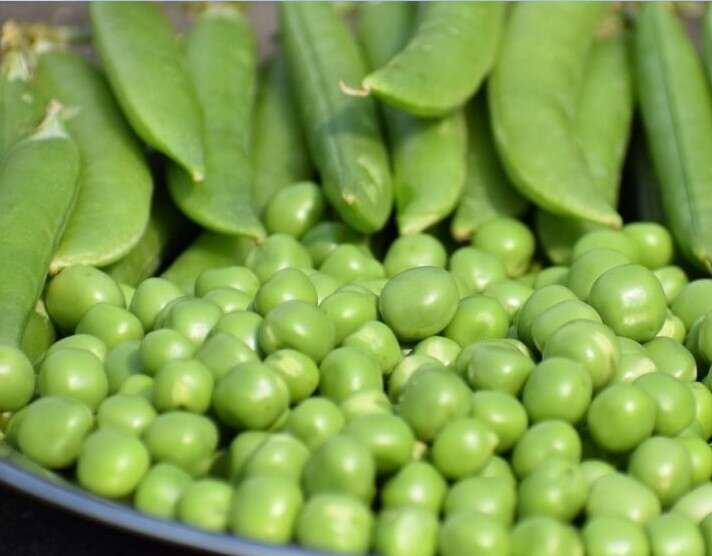
Shade-loving crop number are peas. Peas are the quintessential spring crop. And what does peas that tell you? That means that they really will struggle as you move in those more direct days of Sun, at that higher level of heat. So that tells us that it also could do pretty well as a shady crop. Now, this is an area where, of course, it’s spring right now, so they’re getting a good amount of full Sun. But it’s a little bit more mild Sun. But these are doing really well. They’ll do completely fine in a shady section of the garden. You can even pull that off as you move into summer. A little bit, maybe the peak of summer might still be a little hard. But you can still make it happen. Now, another fun little hack that I’ve done with peas is if you sometimes have a hard time getting them to adhere and climb up, sometimes they like to flop out this way and do all sorts of weird stuff, remember nature is amazing. They’re climbing via their natural organic tendrils that are just adhering to this trellis. Sometimes they need a little help. But yeah, peas, a fantastic one. You can direct sow them. That’s a nice seed soak it, then direct sow that you’ll do completely fine. Although I will say transplanting has worked. It’s just a shallow-rooted plant, and you want to make sure that, more or less, you don’t move it, whether you’re transplanting it or direct sowing it. Just let it be where it is. Let it climb up. And make sure it’s nice and moist. Maybe even throw a little mulch on top just to make sure it doesn’t dry out because, again, it is a shallow-rooted plant. But it will thrive. Absolutely thrive in a shady garden.
Crop Number Six: Radish
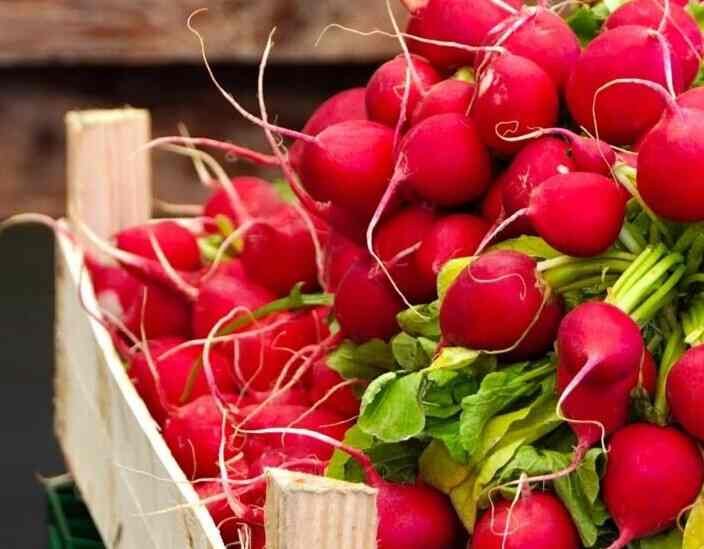
Shady crop number six, are radishes, the humble radish. I think a lot of people have a problem with growing radish, not because it’s hard to grow, but because they don’t really know what to do with it. I will say, pickling radish has been one of my best ways to use it, as well as picking young and roasting the radish or working the young radish into a nice little salad mix, nice and fresh. Now, the thing about radish is, will they do well in full Sun? They can definitely handle it, although they will bolt if they get blasted by the Sun. They just grow slower, but they’ll still bulb up. Usually, you need to be patient. I probably have more different varieties of radish seeds than I do any other type of plant. It’s just so versatile. You have green Lobo, you have black Spanish, you have watermelon, you have Bennajita, you have the giant daikon. I mean, the daikon, it’s not even humble, it’s a massive plant. So radish is amazing. Incredible variety in that plant. There’s just so much you can do with it. So highly, highly recommend radish. It’s kind of a sleeper hit. A lot of people think it’s a boring plant. There’s way more than you think about radish.
Crop Number Seven: Potatoes
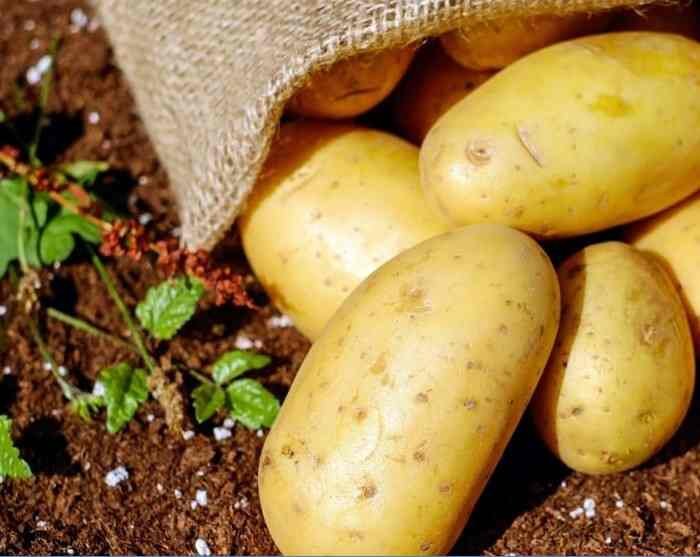
As we move into shady crop number seven, we’re starting to get into crops that are not necessarily shade lovers, but I would say there’s shade tolerant. You can still get a decent yield, although that yield might drop a little bit. Now, that would be potatoes for number seven. Surprisingly, they still can do pretty well. Not your classic way to grow potatoes, but effectively, you could consider that like a lasagna bed if you’re familiar with that technique of gardening or almost like a straw bale gardening style because of the way that the ingredients are layered in there. . As soon as you start to see those flowers develop, you may want to just pull those potatoes that have been planted in a shady section because it’s gonna be hard to get them to size up like crazy. It’s gonna take a long time. So I like to pull his new potatoes, enjoy them, and plant something else in the shady garden. But potatoes can still work in your shady beds.
Crop Number Eight: Tomatoes
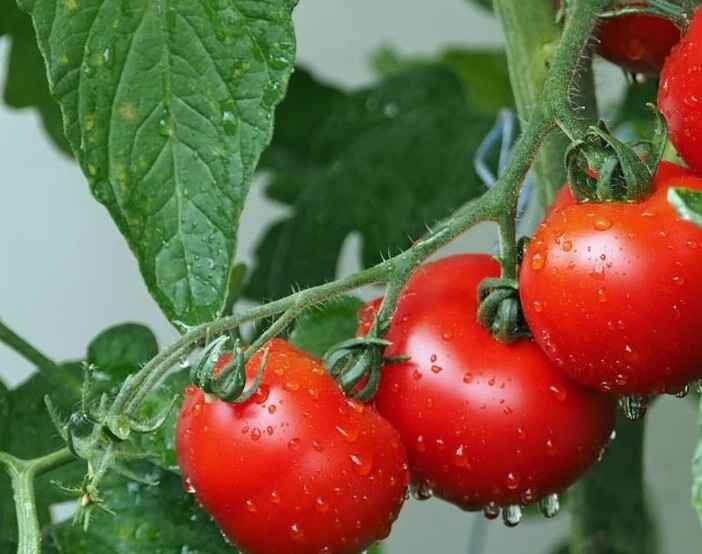
Crop number eight, another one which I have yet to plant in this garden, would be a very fast-maturing, cold-tolerant, bush-style tomato. So a determinate-style tomato that is suited for an early spring planting. That can actually work. You can get a decent yield out of it. I would say glacier tomatoes are a decent one to look at. Really, any tomato that has the name of a cold area, any tomato that has a name that relates to Russia or New York or Canada, a lot of those cultivars, of course, are going to do well in a colder area because that’s what they’re named after, right? And so surprisingly, you can still squeeze out a yield of tomatoes in a shady garden bed. Now, the thing I will say is put it in the best Sun access spot of your shady bed. So if you have a bed that’s getting 2 hours and a bed that’s getting 4 hours, obviously opt to put your bush tomatoes in the 4-hour bed and maybe put your spinach in the 2-hour bed. But you can still do it. And so don’t count out your shady gardens.
Crop Number Nine: Bush Beans

Our next crop, surprisingly, would be a bush bean. Bush beans will produce in a shady Bush Beans garden. Obviously, opt towards that higher end of the sunlight, but this surprisingly is kind of a shady garden. This is a green stock vertical tower garden that I planted out with 100% bush beans, and they’re actually starting to produce.
Crop Number Ten: Basil
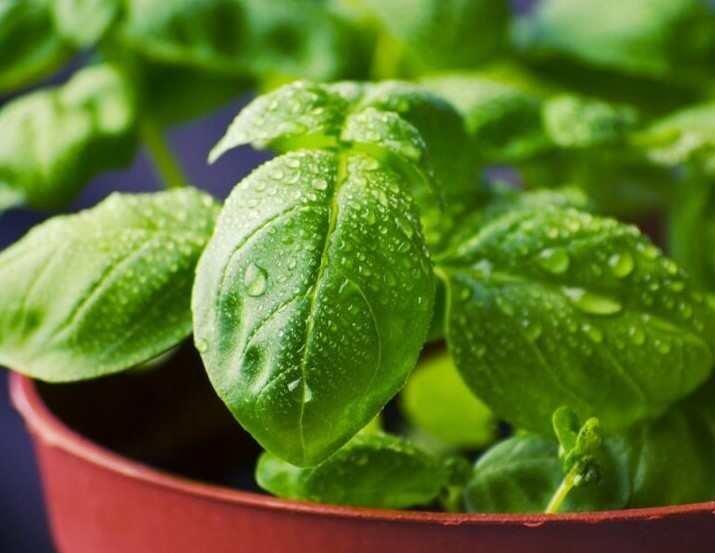
Next, we’re in the world of herbs, guys. These are the herbs that you can grow in a shady garden. So basil, it’s a quintessential full sun Basil crop, but again, it’s one that will tolerate and sometimes even thrive in shade, especially if you grow it for pollination or more ornamental-style gardens. So here I have an African blue basil bush. This is my favorite perennial-style basil that does really, really well in the shade. I’ve cut this back twice in a pretty severe manner, , it’s still exploding in growth. We have a bee that just landed right now, so it’s a fantastic pollinator plant. I have Greek columnar basil. I have another Thai basil that’s hanging out down with these really unique flower clusters that I think are quite beautiful. Behind these, we have pesto perpetuo, which you can see is that lighter-colored basil. And I also have Tulsi, also known as holy basil. So basil is more or less 50% of the shady garden bed, and it’s absolutely thriving.
Tips
Okay, we’ve made it through our suggestions. But we’re gonna get into the shady garden tips. So some things that you can do to really maximize your shady garden. the first one would be just remember that it is gonna grow slower. Remember, most of these things are shade tolerant, not necessarily shade loving, so they’re gonna grow slow. Or maybe throw another 15 to 25 percent on their days to maturity. But you are still going to get a yield, so it’s completely fine.
Tip number two, you’re going to have to remember to water a little bit less often. Remember, the thing that we are not getting in a shade garden is Sun. What’s the second effect of that? There’s going to be less water evaporating, so the plants aren’t going to need to be watered as often. So really try to avoid overwatering your shady garden.
Number three, because they are growing slower, it makes sense to transplant in instead of direct sowing. And this is for two reasons. Number one, you’re gonna get them off to a quicker start because you’re putting a nice healthy, perfectly started seedling into the ground. Number two, oftentimes the shady garden soil temperatures are a little bit colder. And so when you’re direct sowing, that germination can be really slow because the soil temperature is lower. And so if you can, start indoors, transplant out, and that’s gonna help get those plants off to a quicker start.
Number four, give them a little bit of a helping hand with a light feed. Now, this can come in a variety of forms. It could be a light foliar spray of something like a kelp or an algae or a fish emulsion. You could also use a slow-release granular fertilizer. Or you could use something like a liquid fertilizer if you’re a fan of that. And so just give them a little bit of a helping hand. They are growing slower. They are probably going to be taking up nutrients a little bit more slowly. So just give them a little bit of a helping hand.
Number five would be make sure you’re mulching. This is going to help regulate the soil temperature. It’s going to help keep that moisture in the soil. Remember, the thing that’s causing the shade, a large tree, a building, etc., is also shading the soil, and so it’s not going to dry out as quickly. So help retain that moisture by adding a nice layer of mulch on top.
And finally, number six, the last tip would be to grow up. We have effectively two beds worth of crops growing in the space of one by just growing up instead of growing out. And so this is a fantastic way, especially in a small space, to really maximize your yield. You could even say, “Cultivate it.” So, definitely, definitely consider growing up in your shady garden, and you’re gonna maximize your yield. And at the end of the day, that’s what we’re all trying to do.

